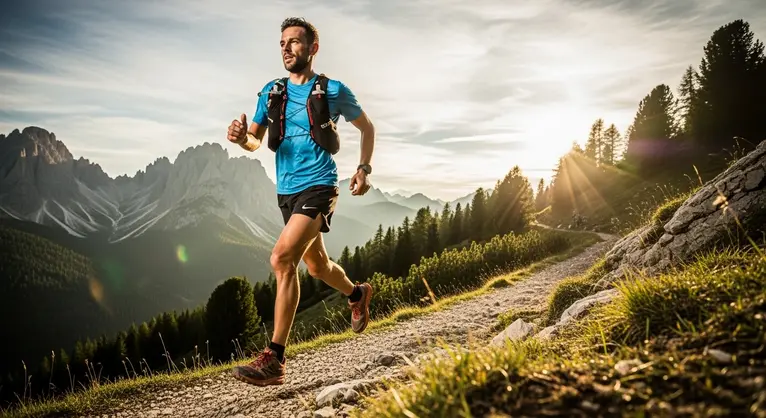Level Up Your Recovery: How VR Sports Training Systems Are Revolutionizing Injury Prevention and Rehabilitation
Injuries are a reality in every fitness journey, whether you’re a weekend jogger or an elite athlete. But what if cutting-edge technology could help you bounce back faster—and prevent many injuries altogether? Virtual reality (VR) sports training systems are rapidly transforming how we approach recovery and injury prevention. Let’s break down how VR fits into your routine and why now is the time to pay attention.
How VR Helps Prevent Sports Injuries
Imagine training in a world where every movement is tracked, analyzed, and coached in real time. That’s the power VR brings to injury prevention.
- Personalized, Sport-Specific Simulations: VR lets you practice the exact moves that put you at risk—think sudden pivots for basketball players or powerful jumps in volleyball—without hitting the court. These systems create realistic scenarios tailored to your sport and body, exposing weaknesses before they cause trouble.
- Real-Time Biomechanical Feedback: Modern VR labs track your joint angles, landing technique, and more. For example, if you land with your knee at a risky angle, the system alerts you instantly so you can adjust on the spot. This feedback isn’t just for pros: even weekend warriors can fine-tune their mechanics with this tech.
Example: A soccer player practicing dynamic cuts in VR gets immediate cues to improve hip stability—nipping potential injuries in the bud.
Beginners Welcome: VR Recovery for Everyone
Rehabbing after an injury can be daunting, especially if you fear re-injury. VR makes this process safer and less intimidating:
- Controlled, Repeatable Environments: VR allows you to relearn skills like running or jumping in a virtual gym—free from the risks of unpredictable playing fields.
- Dual-Task Training: Many programs combine motor skills with cognitive games, challenging you to make decisions under pressure. This not only speeds up your physical recovery but also rebuilds confidence.
Analogy: Think of it as your rehab “injury recovery checklist” —practicing tricky movements safely before going back out there for real.
Tackling Common Sports Injuries with VR
The numbers speak for themselves. Research shows athletes using VR-based rehabs for injuries like ACL tears, knee sprains, or ankle injuries often regain strength and confidence faster than those on traditional programs.
- Big Wins for ACL and Joint Injuries: In one study, VR rehab groups hit 96% physical function scores (compared to just 87% for conventional therapy) after six weeks.
- Functional Testing: You’ll practice essential skills like landing safely or changing direction—crucial for both prevention and return-to-sport readiness.
Fueling Recovery: How VR Data Can Guide Your Nutrition
While VR doesn’t replace a sports nutritionist, it does provide valuable data. Your movement quality, recovery speed, and effort levels can help a professional fine-tune your diet.
- Top Recovery Nutrients:
- Protein for muscle rebuilding
- Omega-3s to fight inflammation
- Vitamin D, calcium, and collagen for bone and tissue health
Tip: Use insights from VR progress tracking to adjust calories and macros—keeping your energy up and your healing on track. For more on boosting recovery nutrients, check out our guide on calcium for bone strength.
Tools and Gadgets: The VR Recovery Toolbox
Gone are the days of one-size-fits-all rehab. Today’s gadgets include:
- Wearable Sensors: Track limb motion, pressure, and angles, providing instant feedback during workouts or rehab drills.
- Home Apps: Many VR programs (like Rezzil) support at-home rehab, blending interactive challenges with progress dashboards.
- Performance Tracking: Visualize your gains, spot setbacks early, and stay accountable—all features that help both amateurs and elite athletes.
Boosting Motivation: The Psychology of VR Rehab
Want to stick with your recovery plan? VR’s game-like approach keeps things engaging.
- Gamification: Completing virtual challenges, earning achievements, and tracking progress turn boring rehab routines into something you’ll actually look forward to.
- Building Confidence: Realistic simulations allow you to face high-risk moves in a safe space—a proven way to reduce anxiety and boost readiness for return to play.
Practical Takeaways for Your Recovery Journey
- Look for VR-supported programs—many clinics and gyms offer them now.
- Use VR feedback as you would a coach’s advice: adjust technique before issues arise.
- Pair VR data with professional nutrition advice for optimal healing.
- Embrace gamified rehab to stay motivated—and have fun with your fitness.
The Future Is Now: Recovery Smarter, Not Harder
Recovery and injury prevention don’t have to be guesswork or a grind. With VR sports training systems, you can train smarter, heal better, and get back to what you love—stronger than ever. Ready to step into the future of fitness? At Gympulse Club, we believe technology and expertise go hand in hand to keep you healthy. Why not give VR a try for your next comeback?
Stay strong, stay curious, and keep moving forward—because your best performance is still ahead!

